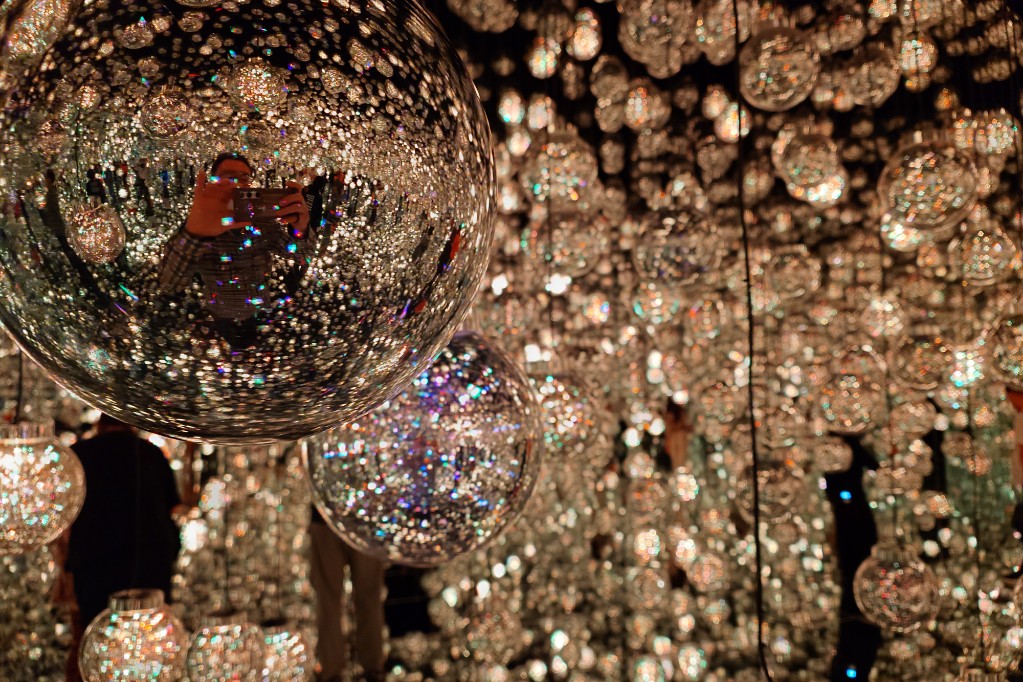カテゴリ: 都内近郊散策



駅のそばにある品川寺。ほんせんじ、と読む。
Honsenji temple near the station.
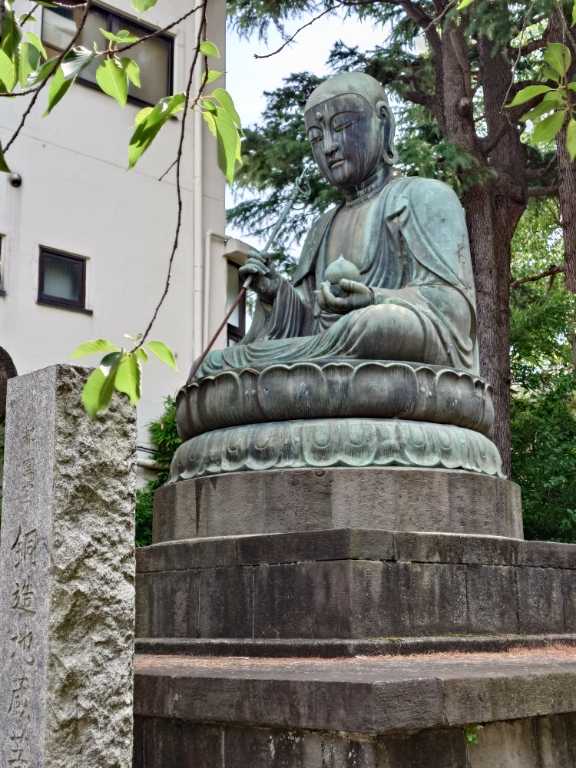
江戸六地蔵の第一番に列せられる地蔵菩薩。
The Jizo Bodhisattva ranked as the first among the Six Jizo Statues of Edo.

青物横丁から京急線で2駅、立会川駅で下車。
Get off at Tachiaigawa Station, two stops from Aomonoyokocho on the Keikyu Line.
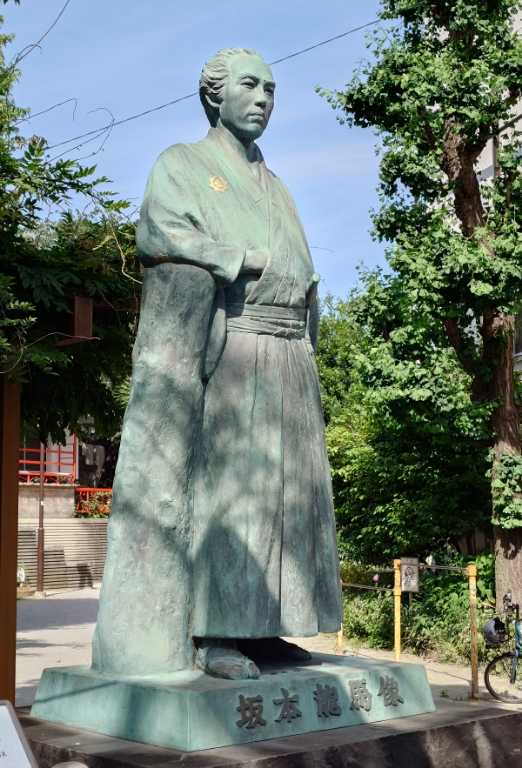
駅から歩いてすぐの公園には「20歳の坂本龍馬」像がある。
There is a statue of "Ryoma Sakamoto at age 20" in the park just a short walk from the station.
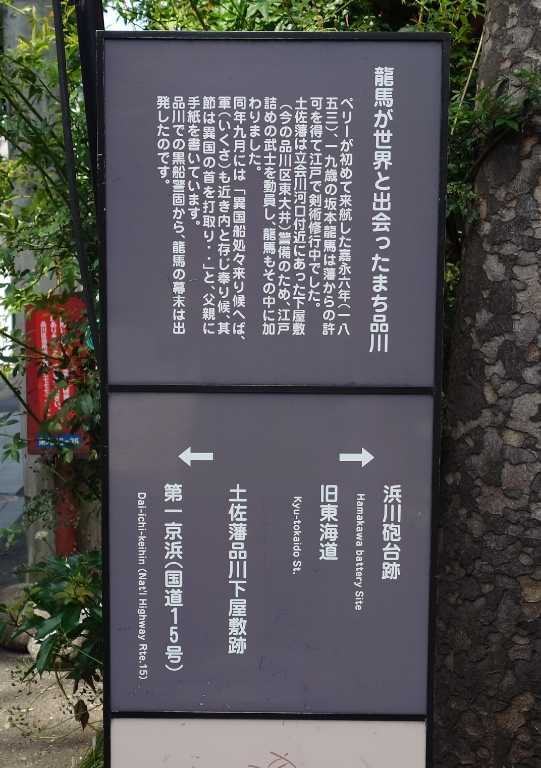
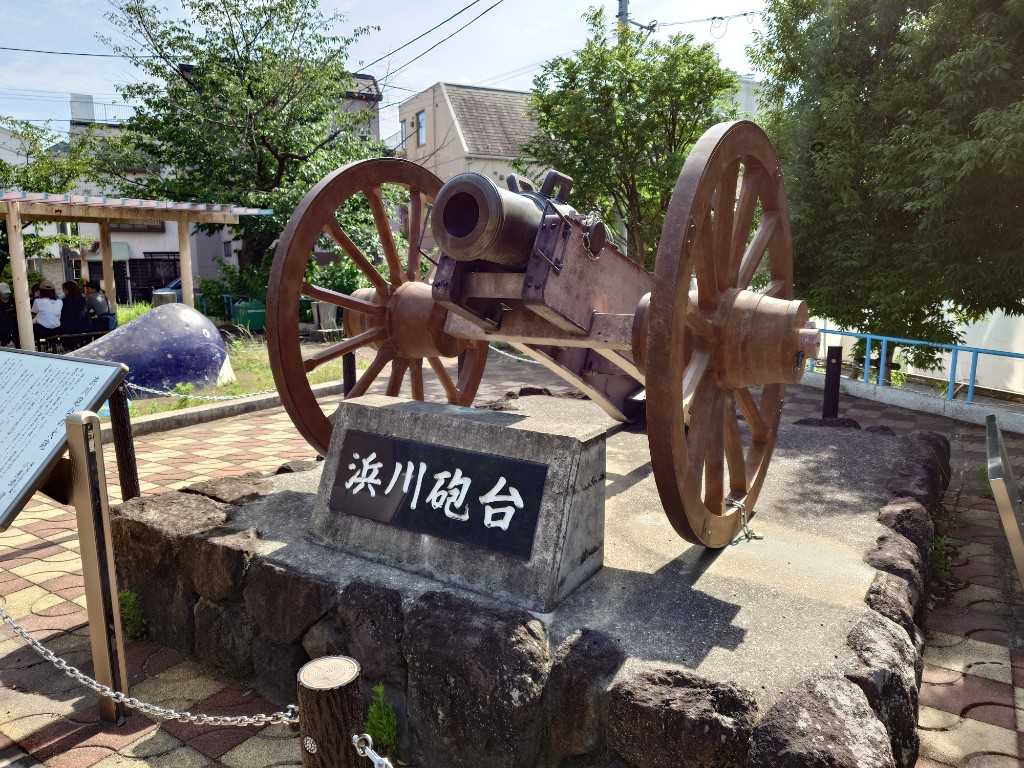
そこからさらに少し歩くと、浜川砲台跡に出る。今は閑静な公園になっている。
新浜川公園に2015年に復元設置された「浜川砲台の大砲」は、この砲台に据えられた8門の大砲のうちの1つ「30ポンド6貫目ホーイッスル砲」を原寸大(全長 3メートル、車輪の直径 1.8メートル)で再現したものです。品川龍馬会のメンバーを中心に地元の人々が資金を集めて造り、区に寄贈されました。
In the past, the Tosa Domain had a secondary residence here, and shortly after Perry’s return in the early Ansei era, a battery was installed on the left bank of the Tachiaigawa River mouth. The “Hamakawa Battery Cannon” restored and installed in Shin-Hamakawa Park in 2015 is a full-scale reproduction (3 meters in length, with wheels 1.8 meters in diameter) of one of the eight cannons originally placed there, a 30-pound, 6-kan Hoistle cannon. It was built through local fundraising mainly by members of the Shinagawa Ryoma Association and donated to the ward.

立会川からさらに東海道を歩くと、町名が大井に変わる。
If you continue walking along the Tokaido from Tachiaigawa, the neighborhood name changes to Oi.
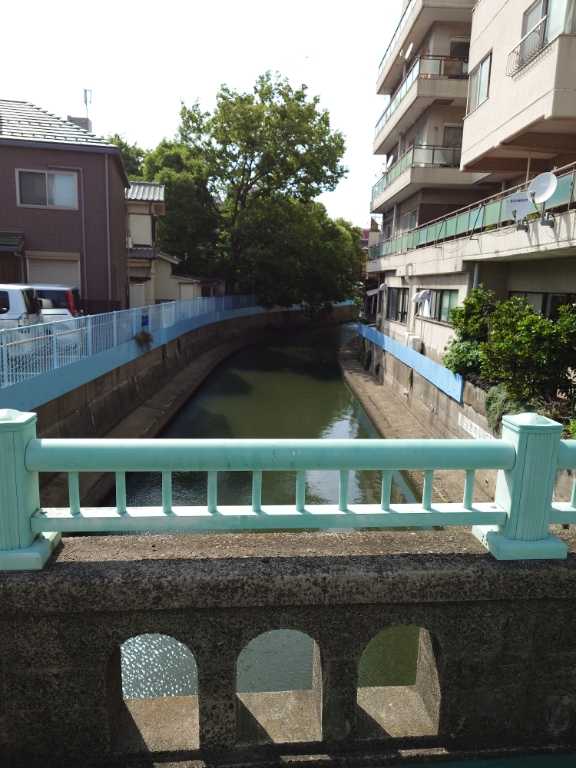
浜川橋というこの橋は、何の変哲もない橋に見えるが…
his bridge, called Hamakawabashi, looks like an ordinary, unremarkable bridge—but...
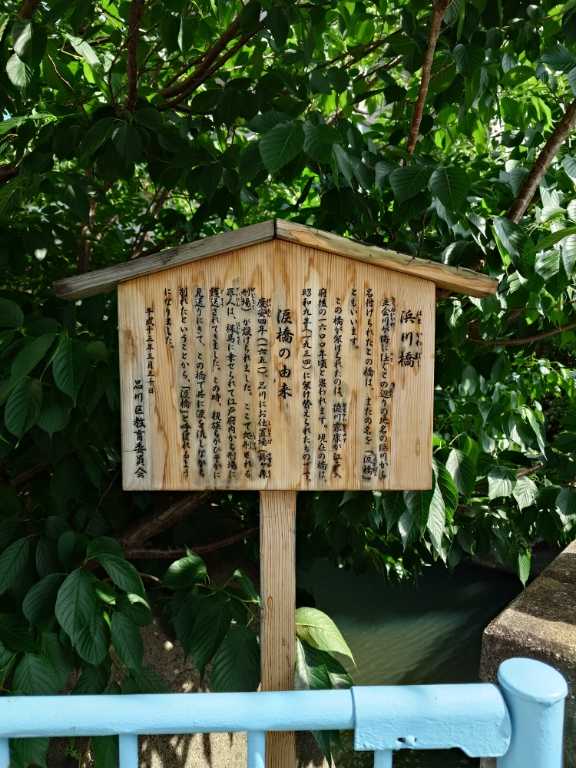
通称「涙橋」と呼ばれていたそうだ。この地で、鈴ヶ森刑場に搬送される罪人の親類縁者がこっそり別れを惜しんだからだという。
It was popularly known as “Namida-bashi” or “The Bridge of Tears.”
This was because relatives and friends of prisoners being taken to the Suzugamori Execution Grounds would secretly say their goodbyes here.
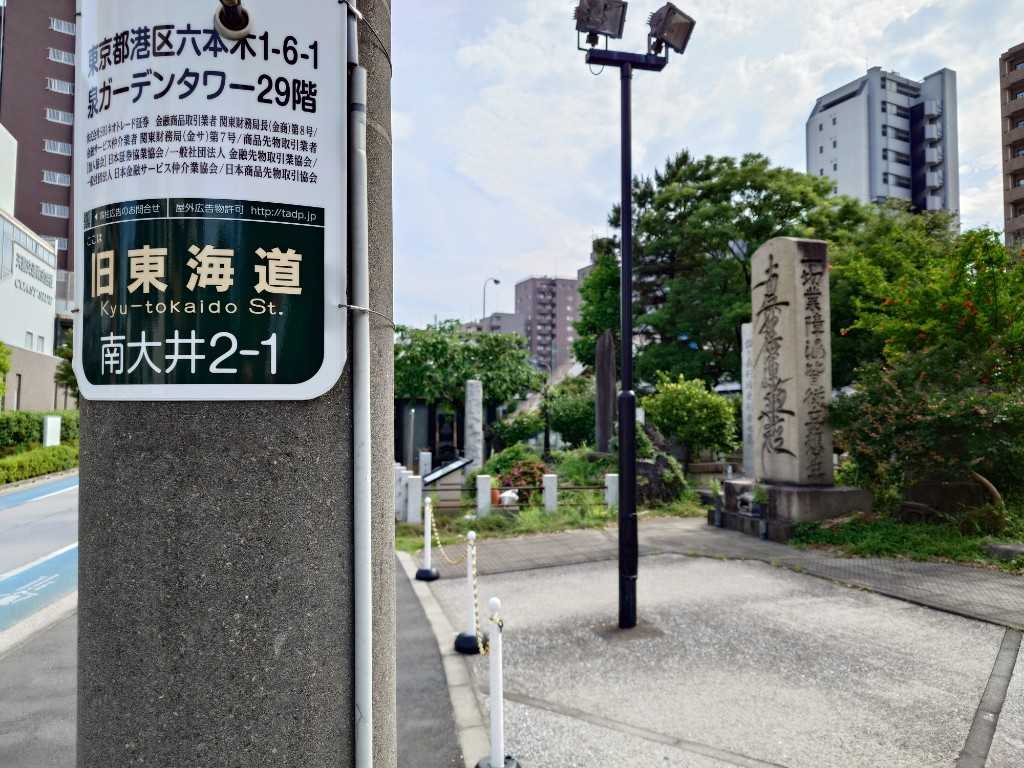
その鈴ヶ森刑場跡は、旧東海道が国道15号と合流するところにある。
The site of the Suzugamori Execution Grounds is located where the old Tokaido Road merges with National Route 15.

江戸の刑場は鈴ヶ森と小塚原(と八王子)が知られている。
最初は三田にあった刑場が、江戸の町が拡張するのに従って南に移動し、鈴ヶ森に移転したそうだ。
Originally, the execution site was located in Mita, but as Edo expanded, it was gradually moved southward and eventually relocated to Suzugamori.
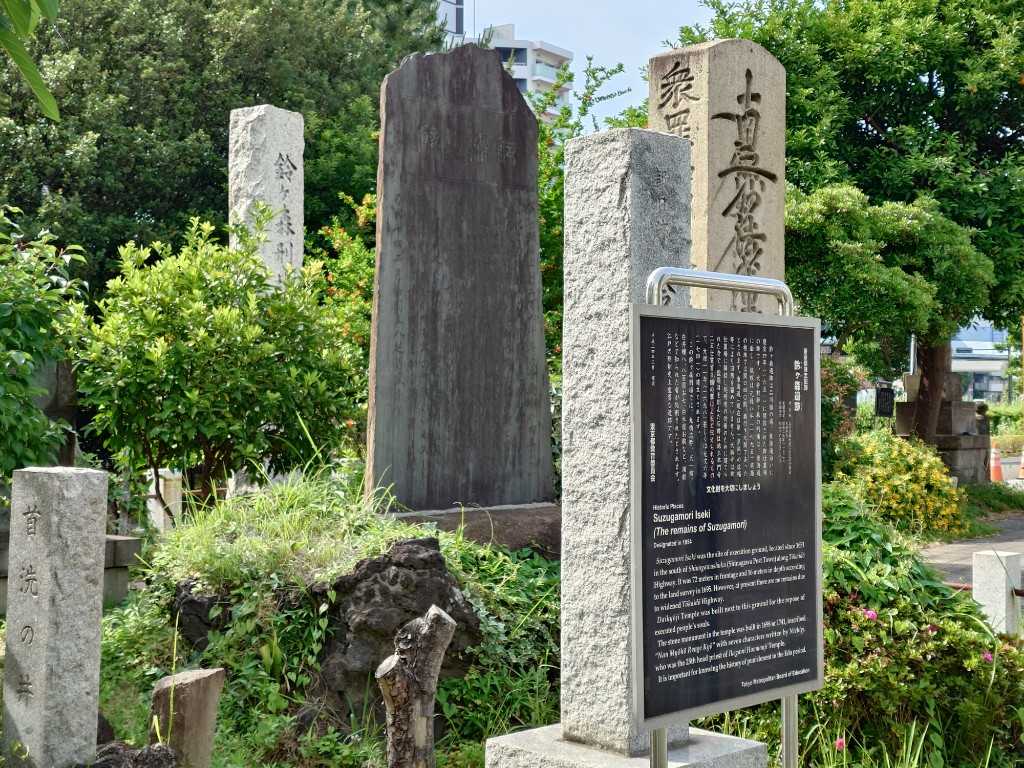
刑場跡には多くの供養塔が建てられている。
Many memorial towers have been erected at the site of the execution grounds.
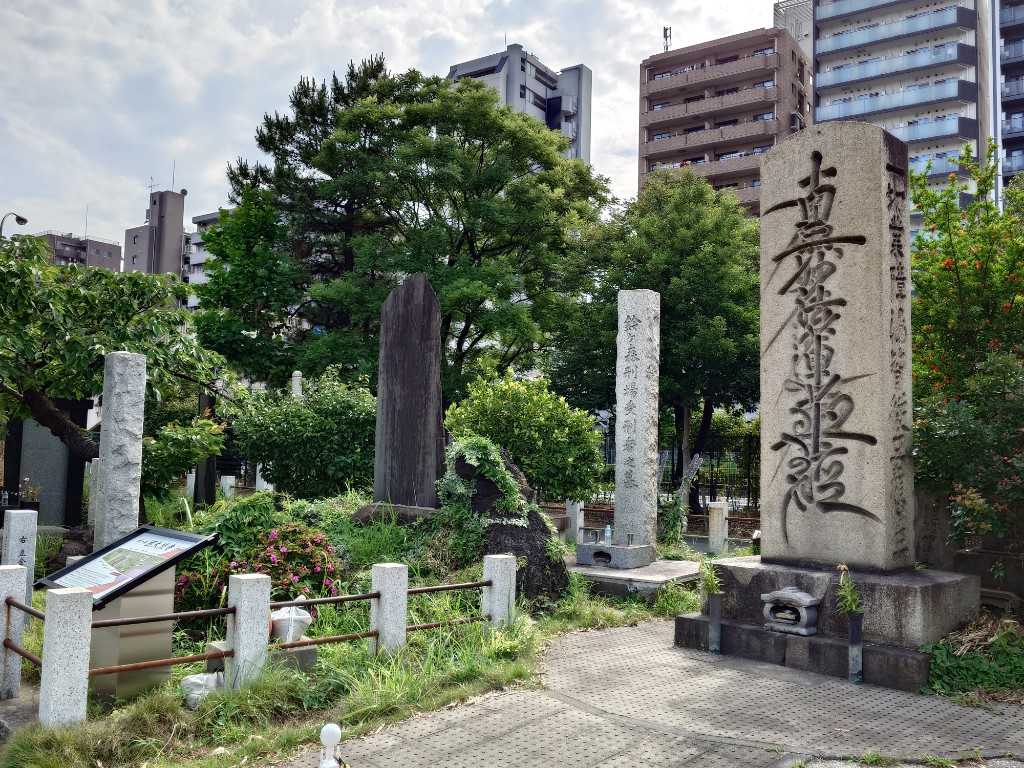
題目供養塔といって「南無妙法蓮華経」と刻まれているようだ。建てられたのは元禄11年(1698)年とのこと。
They are called "Daimoku memorial towers," inscribed with "Namu Myōhō Renge Kyō."
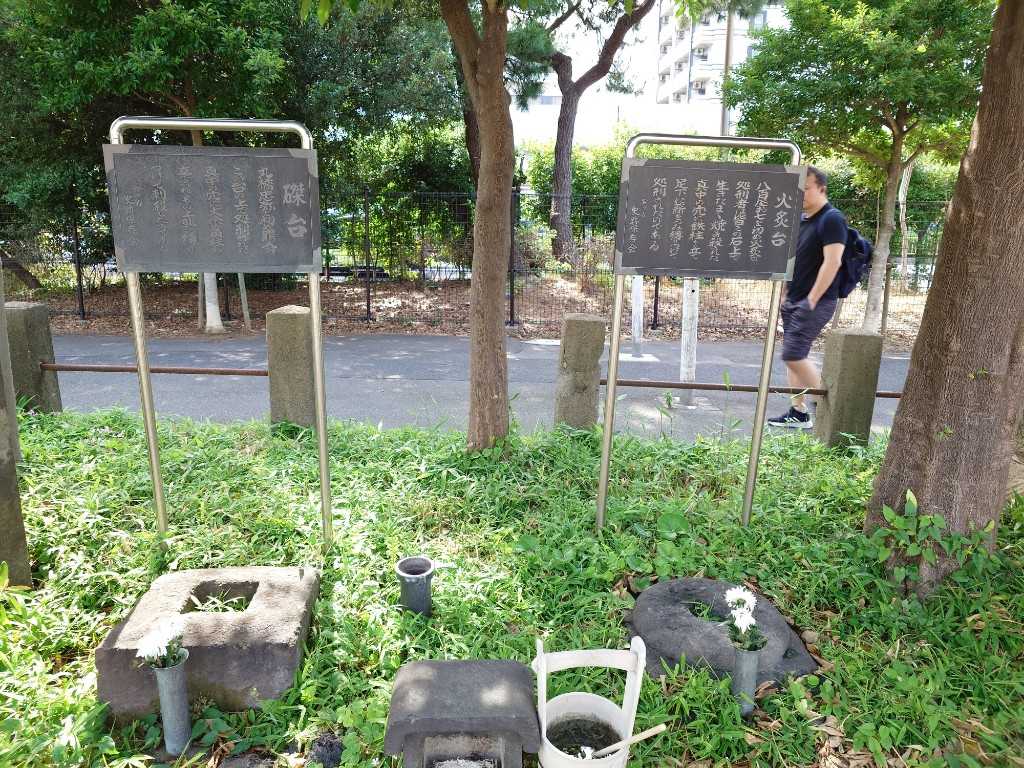
火炙りと磔に使われた台石の跡。実は、鈴ヶ森で行われていたのはもっぱら火炙りや磔など見せしめ的な処刑で、通常の死刑である斬首刑の多くは小伝馬町の牢屋敷で執行されていたそうだ。
Remains of the stone platform used for burning at the stake and crucifixion.
In fact, at Suzugamori, executions were mainly by burning and crucifixion as public deterrents, while most beheadings—the usual form of death penalty—were carried out at the Kodemmacho prison.

また、獄門の場合は小伝馬町で死刑を執行した後に、首だけ運ばれてきて鈴ヶ森刑場で晒されていたという。
Also, in the case of gokumon (displaying the severed head), the death sentence was carried out at Kodemmacho prison, after which only the head was transported to Suzugamori execution grounds to be publicly exhibited.

#こちらのサイトを参考にさせていただいた。
鈴ヶ森刑場跡の題目供養塔
Reference site
Suzugamori Execution Grounds Memorial Pagoda
お気に入りの記事を「いいね!」で応援しよう
[都内近郊散策] カテゴリの最新記事
-
ぶらり東京散歩38~原宿太田美術館からハ… 2025年11月13日
-
「渋谷を駄目にした 鉄道会社どもーー再開… 2025年11月12日
-
モーリス・ユトリロ展@SOMPO美術館~その2 2025年11月11日
【毎日開催】
15記事にいいね!で1ポイント
10秒滞在
いいね!
--
/
--
PR
X
Comments
shuz1127
@ Re[1]:モーリス・ユトリロ展@SOMPO美術館~その1 Maurice Utrillo Exhibition at the SOMPO Museum — Part 1(11/10)
Henryさん おお、西山美術館に行かれたの…
Henry@ Re:モーリス・ユトリロ展@SOMPO美術館~その1 Maurice Utrillo Exhibition at the SOMPO Museum — Part 1(11/10)
西山美術館、メルカリで無料招待券をお安…
shuz1127
@ Re[1]:ほどよく均整の取れたベリーA~マスカットベリーA2023(白百合醸造) Well-Balanced Berry A – Muscat Bailey A 2023 (Shirayuri Winery)(10/10)
noir-funさんへ 熊本ワインファーム、例…
noir-fun
@ Re:ほどよく均整の取れたベリーA~マスカットベリーA2023(白百合醸造) Well-Balanced Berry A – Muscat Bailey A 2023 (Shirayuri Winery)(10/10)
機会があれば是非、熊本ワインファームの…
shuz@ Re[1]:悪くはないのだけど…エラスリス MAX・カベルネソーヴィニヨン2020 “Not bad, but not quite…” — Errazuriz MAX Cabernet Sauvignon 2020(09/24)
noir-funさん ご無沙汰していますが、お…
Category
カテゴリ未分類
(10)お知らせ・リンク集
(29)ワイン新着情報
(515)ワインコラム
(343)ワインコラム2(話飲徒然草拾遺集)
(75)ワインコラム3(RWGコラム拾遺集)
(28)都内近郊散策
(281)こんな店に行った
(326)B級グルメ・カフェ
(248)健康
(219)エッセイ
(76)ひとりごと・備忘録
(541)カミサン推薦ネタ
(28)語学・資格・学び直し
(95)山歩き・ハイキング
(123)アクアリウム・ガーデニング
(339)育児・教育
(88)PCネット時計カメラ
(129)音楽・オーディオ
(70)リフォーム引越し
(50)こんなワイン買った
(129)ボルドー
(99)ブルゴーニュ・ジュブレシャンベルタン
(90)ブルゴーニュ・モレサンドニ
(40)ブルゴーニュ・シャンボールミュジニー
(45)ブルゴーニュ・ヴォーヌロマネ・ヴジョ
(56)ブルゴーニュ・NSG
(58)ブルゴーニュ・その他コートドニュイ
(63)ブルゴーニュ・コルトン・ポマール・ヴォルネイ
(30)ブルゴーニュ・ボーヌ周辺
(56)ブル・ピュリニー・シャサーニュ・ムルソー
(21)ブルゴーニュ・その他コートドボーヌ
(27)ブルゴーニュ・裾モノイッキ飲み!
(221)ブルゴーニュ・その他地域
(37)ボジョレー再発見プロジェクト
(32)シャンパーニュ
(195)ロワール・アルザス・ローヌ
(54)その他フランス
(16)イタリア
(80)スペイン・ポルトガル
(37)ニュージーランド・オーストラリア
(49)USA
(40)安泡道場(シャンパーニュ以外)
(37)その他地域・甘口など
(43)日本ワイン
(64)ワイン会・有料試飲
(173) セシル・トランブレ…
 New!
mache2007さん
New!
mache2007さん
【wine】アルザスシ… New!
ささだあきらさん
New!
ささだあきらさん
貝殻亭でランチ zzz.santaさん
zzz.santaさん
EF210-328 EF510-3… musigny0209さん
グラムノン yonemuさん
yonemuさん
ジャン・ルイ・シャ… hirozeauxさん
hirozeauxさん
実南 月一会 ミユウミリウさん
ミユウミリウさん
ワイン&ジョギング … Char@diaryさん
道草日記 旅・釣… 道草.さん
鴨がワインしょって… うまいーちさん
 New!
mache2007さん
New!
mache2007さん【wine】アルザスシ…
 New!
ささだあきらさん
New!
ささだあきらさん貝殻亭でランチ
 zzz.santaさん
zzz.santaさんEF210-328 EF510-3… musigny0209さん
グラムノン
 yonemuさん
yonemuさんジャン・ルイ・シャ…
 hirozeauxさん
hirozeauxさん実南 月一会
 ミユウミリウさん
ミユウミリウさんワイン&ジョギング … Char@diaryさん
道草日記 旅・釣… 道草.さん
鴨がワインしょって… うまいーちさん
Keyword Search
▼キーワード検索
Calendar
© Rakuten Group, Inc.


